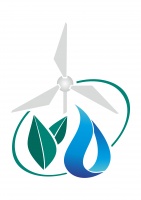Comparison of practices
| Название практики | Set of hydro-reclamation measures | Increasing water use efficiency on WUA and water user levels |
|---|---|---|
| Category | Water resources | Water resources |
| Tool | Set of hydro-reclamation measures | Irrigation technique and technology |
| Field of application |
|
|
| Usability of practice for adaptation to climate change | Low | Moderate |
| Implemented by | Ministry of Nature Protection of Turkmenistan and German Technical Cooperation Agency (GIZ) |
Department of Water Management and Reclamation of the Ministry of Agriculture, Food Industry and Reclamation (MoAFIR) of the Kyrgyz Republic with the support of Helvetas Swiss Intercooperation |
| Used by |
Country: Turkmenistan Province: Mary Region District: Sakarçäge District Other settlement: Zakhmet Daikhan Farm |
Country: Kyrgyzstan Province: Jalal-Abad Region |
| Local specifics | Sakar-Chaga District (area of 53,000 ha; population of 132,000 people) is located in the northwestern part of Mary Region in the Murgab River delta. The majority of local residents live in the oasis hosting 80% of settlements. |
Water User Associations (WUAs) are located to the northwest of Jalal-Abad (region’s capital) on the border of Namangan and Andizhan Regions of Uzbekistan (Kugart River Valley, 1,200 m ASL, northern tail of the Fergana Valley). |
| Practice usage period |
Start date: 01.01.2009 End date: 31.12.2010 |
Start date: 01.01.2009 End date: 31.12.2017 |
| Problem solved through this practice | Land salination represents the main challenge in the area due to improper irrigation technology and lack of drainage, in their turn leading to extremely low productivity. With time, the existing irrigation management system resulted in irrational use of water and land. While water distribution rates were calculated in a centralized manner depending on specific crops, in practice water supply monitoring is extremely poor – water supply (canals) infrastructure is inconsistent with farmers’ needs leading to excessive and, vice versa, insufficient watering of different sites. In addition, there exists an informal water payment system leading to the advantageous position of certain users. |
Low water use efficiency on WUA and farm levels |
| Tools used in the practice | Set of hydro-reclamation measures: preventive land forming (leveling), composting, monitoring of ground water bedding and mineralization, decentralized water management planning, capacity building, etc. |
Technical tools: Effective water use technologies, modern technologies of irrigation water management. Cognitive tools: Consultations by Helvetas Swiss Intercooperation and local experts, capacity-building training seminars. |
| Description of the practice and its results | Actions: A series of measures were executed to prevent land degradation and improve land reclamation condition, including introduction of high-performance drainage systems and reclamation technologies, construction of a new collector and cleaning of the existing one, construction of 9 water-regulating and 2 water-measuring facilities. Results:
|
Actions: Capacity building:
Partnership building:
Results: The practice promoted building of WUA capacities, increasing the efficiency of irrigation water use on farm level as well as building farmer capacities on water resources management. |
| Lessons learnt and recommendations made | Lessons learnt:
Recommendations: It is necessary to focus on strengthening the role of local associations in rendering irrigation services and managing the canal’s water level. Local water users will be rendered an opportunity to design effective irrigation water management schemes. The experience of decentralized water planning and management accumulated by water tenants will be documented and distributed as a part of knowledge-management (capacity-building) strategy. It is necessary to closely cooperate with the newly established Agriculture Advisory Service working on sustainable land and water management, as well as to disseminate corresponding practices in other areas. |
Lessons learnt: Water shortage and inefficient water use (field/farm level) pose obstacles to farmers receiving high yields and incomes from agricultural production. Excessive irrigation in upper-stream areas and water shortage in lower-stream areas, although a paradox, occur simultaneously as farmers lack knowledge on actual crop water requirements and water-efficient irrigation. Recommendations: The practice should be scaled-up across the country. It is also necessary to conduct regular trainings to raise awareness among farmers and build their capacities on applying advanced irrigation methods providing them with an opportunity to manage scarce water resources more effectively. |
| Source of practice | Domestic tools (outcomes of research by domestic R&D organizations) |
|
| Readiness for implementation |
1. Cost of implementation: High 2. Approximate cost of investment per 1 ha: 3. O&M costs: High 4. Expert support: Not needed |
1. Cost of implementation: High 2. Approximate cost of investment per 1 ha: 3. O&M costs: High 4. Expert support: Not needed |
| Brief information on the project | Project title: Local-level capacity building and investment for sustainable management of land resources. Project duration: 2009-2010. Project goal and objectives: overcoming barriers to higher efficiency and performance of water supply systems in climate change induced drought conditions. Project beneficiaries: Zakhmet Daikhan Farm (approximately 300 daikhan households). Project implementer: Ministry of Nature Protection of Turkmenistan and German Technical Cooperation Agency (GIZ). |
Project title: Effective Water Use (SEP) (Kyrg. “Suunu effektivduu paidalanuu”) Project duration: 2009-2017 (9 years). Project goal and objectives: enhance water resources management frameworks and capacities in terms of rendering services to farmers with the aim of increasing their incomes, food security and capabilities to adapt to social, economic and climate risks; improve farmers knowledge and their abilities to apply advanced field-level irrigation and water collection methods providing them with an opportunity to manage scarce water resources more effectively. Project beneficiaries: water users (farmers) and WUAs. Project implementer: Department of Water Management and Reclamation of the MoAFIR of Kyrgyzstan |
| Funding source | UNDP and Global Environmental Facility | Helvetas Swiss Intercooperation, Swiss Agency for Development and Cooperation |
| Information sources |
|
|
| Contacts of a person, who filled this form | SIC ICWC |
SIC ICWC |
| Form submission date | 17.04.2018 | 18.05.2018 |




